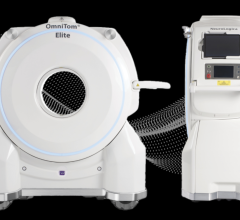
JNM celebrates 60 years of nuclear medicine research. Image courtesy of Society of Nuclear Medicine and Molecular Imaging.
December 14, 2020 — The Journal of Nuclear Medicine (JNM) has issued a special supplement commemorating six decades of leadership in the field of nuclear medicine, molecular imaging and therapy.
The supplement features a collection of the most influential and frequently cited manuscripts in JNM's history, representing seminal discoveries and scientific contributions that shaped the future of medicine. Invited perspectives from world leaders in nuclear medicine, molecular imaging, and theranostics explain why each of these articles had such an enormous impact.
Highlights include milestone articles on the invention of the Anger camera, the creation of positron emission tomography (PET) and 18F-FDG, the development of fusion PET/CT, the introduction of FDG PET-based response criteria in solid tumors, and many more landmark papers that have shaped the history of nuclear medicine.
Moving from the past to the present and beyond, the special issue concludes with the JNM associate editors' views on the most promising future applications of nuclear medicine. "We hope to demonstrate that the field not only is highly relevant for diagnosing and understanding the pathophysiology of human diseases but also is increasingly becoming an integral part of patient management," they said.
"Our collective success is rooted in the research that scientists from around the globe submit to JNM, the tireless efforts of reviewers and editorial board members, and the commitment and interest of readers," said JNM Editor-in-Chief Johannes Czernin, M.D. "Substantial credit for the success of JNM also goes to its past editors, who each made unique contributions to establish JNM as the world's leading journal on nuclear medicine and molecular imaging."
For more information: www.snmmi.org


 July 30, 2024
July 30, 2024 








